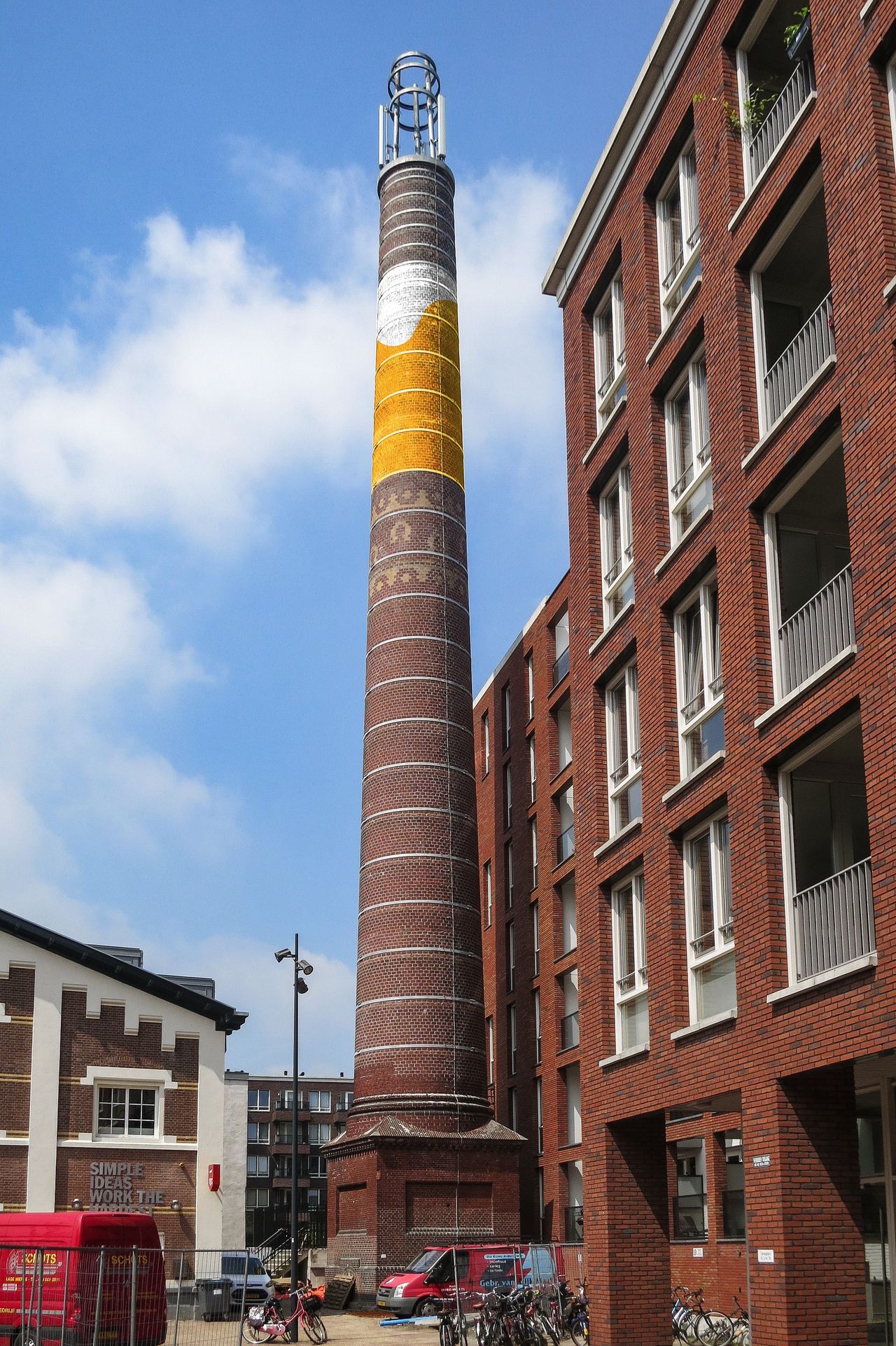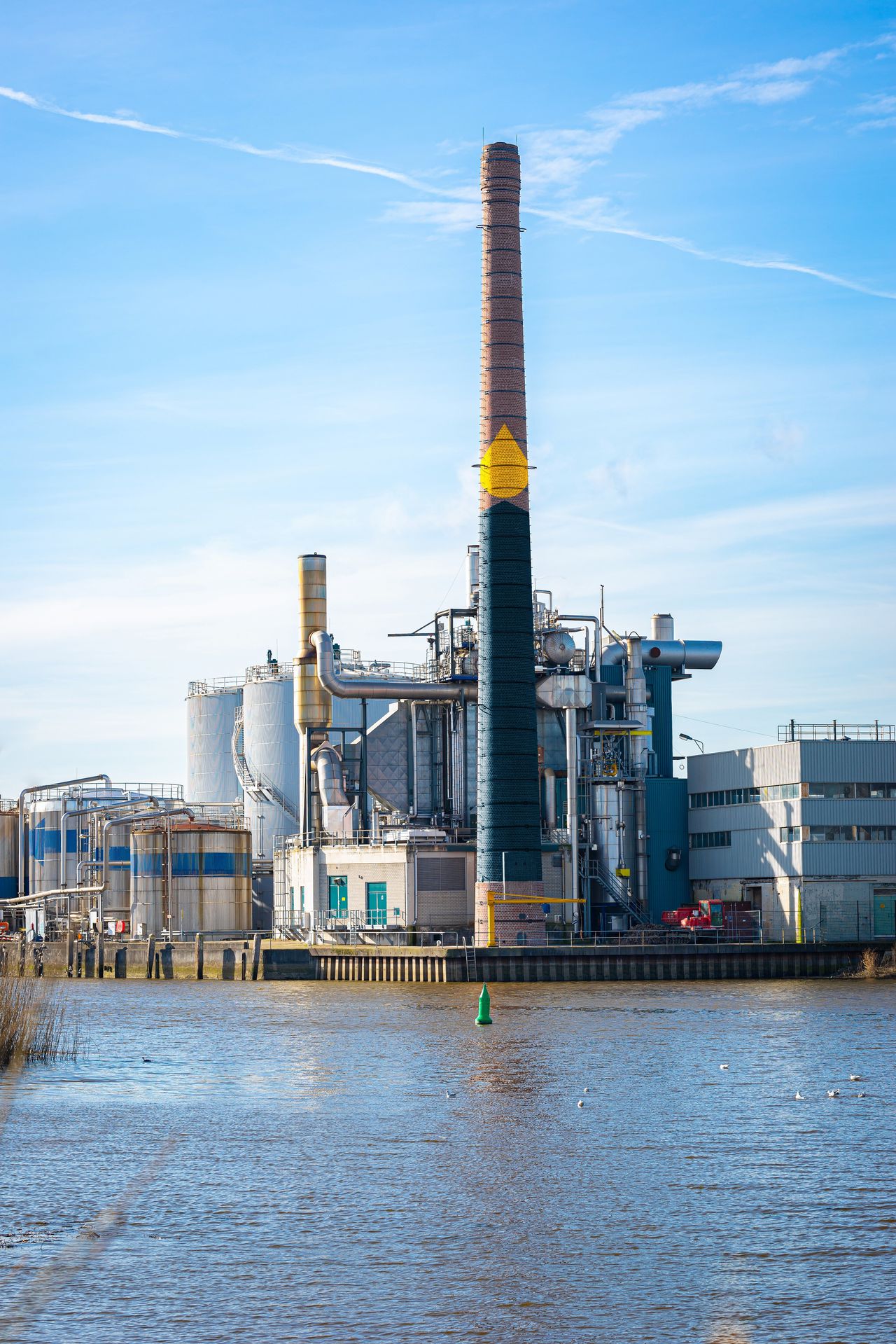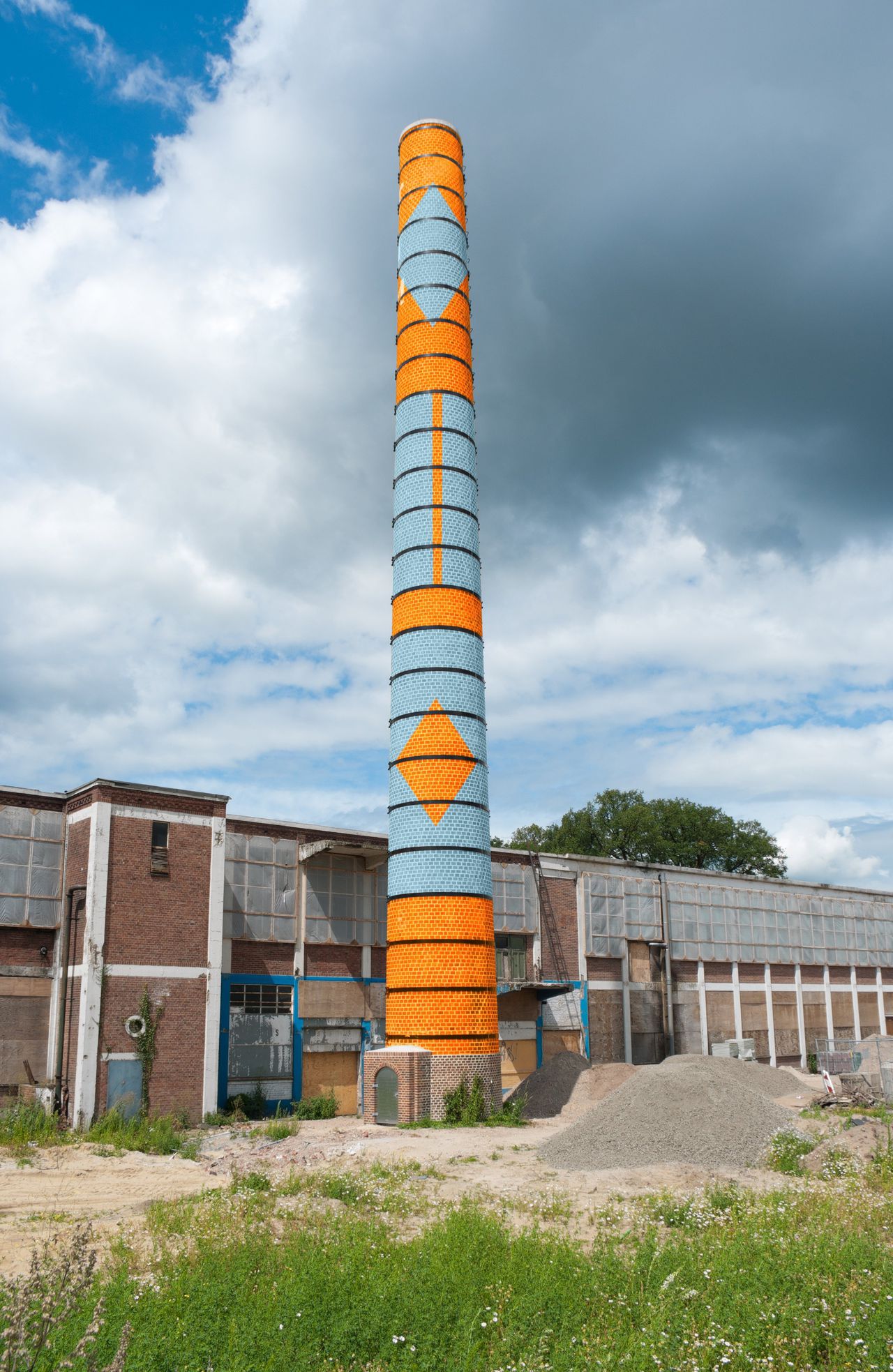Graphic designer Daan Janssens (47) lives in Breda between two factory chimneys that have not produced chimneys for years. Right in front of his door is the chimney of the former De Drie Hoefijzers brewery. On the other side of his apartment, above the railway, rises the chimney of De Faam’s licorice and peppermint factory. Janssens grew up around the corner from the candy factory and remembers the sweet smell emitted by De Faam. Three horseshoes smelled in the wind for an hour, he says.
Brick factory chimneys have fascinated graphic designers for years. These are special buildings, he says, standing next to De Faam’s forty-meter tall chimney. “Don’t you know greatness?”
Janssens recently published Still standing, standing still. The landmark function of factory chimneys. His book is an ode to an industrial heritage that has long symbolized prosperity and progress; some cities had skylines dominated by chimneys. At the same time, his book is also a proposal to give a new meaning to the remaining chimneys.
Janssens would like to paint the chimneys with graphic designs that depict the workings of the lost factories. These paintings can reinforce the new meaning of chimneys, he says. With forty photoshopped examples, the designer shows in his book how colorfully painted chimneys gain visibility and can thus help to navigate the built environment.
Efteling
Janssens can pinpoint exactly where and when his interest in chimneys arose. It was seven years ago in De Efteling, he says. With her sister, she stood on Baron 1898, a roller coaster themed around a gold mine. He had no appetite for that roller coaster, says Janssens. “But right next to it was a chimney. Looking up, I suddenly saw the beauty of the shape, the bricks stacked in a circle rising towards the sky.”
Between 1880 and 1960, thousands of chimneys were built to remove combustion gases from steam boilers
The graphic designer delved into the subject and noticed that not so long ago there were only brick chimneys in the Netherlands. After the introduction of the steam engine, thousands of chimneys were built to remove combustion gases from steam boilers.
Most of the approximately 7,000 chimneys built between 1880 and 1960 have been dismantled, says Janssens. And of the five hundred chimneys still standing, many are in poor condition. It was only relatively recently that chimneys were recognized as a significant industrial heritage.


In his book, he lists 170 chimneys with memorials. The two oldest date from 1811: the iron foundry in Gendringen and the skate factory in IJlst. The tallest legally protected chimney is still in use. It is the eighty-meter high brick chimney of the then coal-fired power plant in Leiden, built in 1951. This chimney is still the tallest structure in the city.
Clear communication
Two references inspired Janssens to write his book. In 2017, the Factory Chimneys Foundation published a comprehensive study of Dutch factory chimneys by AJ Barnard. This is where the designer learned everything about construction methods and chimney design.
Supernew Supergraphics was his second source of inspiration. That 2014 book shows how designers around the world are trying to transform public spaces with large building graphics.
Janssens mainly reflected on the activities of the Society for Experiential Graphic Design (SEGD), a group of designers and artists founded in the United States in the 1960s. Armed with brushes and bits of paint, the members took to the streets. By painting dilapidated buildings with colorful paintings, the group hoped to improve the social conditions of the often poor residents.
Janssens, a graphic designer, calls it a “dream” that he will soon be able to paint a chimney
the so-called SuperGraphics SEGD later also focused on the visual side of signs and the clear communication of complex information. The Washington-based organization now has more than 2,200 members in 36 countries. The purpose of graphic designs for hospitals, museums and other public spaces, according to the site: “To enhance the human experience and make buildings more inclusive and intuitive, more emotional and engaging, more sustainable and shareable.”


Berry juice
Janssens also wants to make a difference with his own “SuperGraphics”. Chimneys deserve it, he says. “They once served factories, now they operate… landmark.” The pictograms he wants to use to describe the operation of the former factory with chimneys are based on a pattern obtained from used brick patterns.
On the chimney of the former East Groningen brick factory, Janssens drew a pattern with the typical red bricks that the factory produced for years. He digitally covered the barrel of the Phaff fruit winery in Winschoten with drops of berry juice, and the barrel of Lettergieterij Amsterdam with the silhouette of letters cast from lead.
None of Janssens’ plans have been implemented yet. He calls it a “dream” that he will soon be able to paint a chimney. He draws hope from an old project in Washington that he recently came across on Instagram. On his phone, he shows how American artist Alex Brewer painted a completely empty Baptist church in 2012 with an eclectic mix of vibrant colors and whimsical patterns.
“So it’s possible,” says Janssens. “And I will succeed.” He calls his book a springboard to spark enthusiasm for his plans.
/s3/static.nrc.nl/wp-content/uploads/2024/06/10112248/data116576777-decefc.jpg)

/s3/static.nrc.nl/wp-content/uploads/2024/06/10112244/data116576650-341515.jpg)